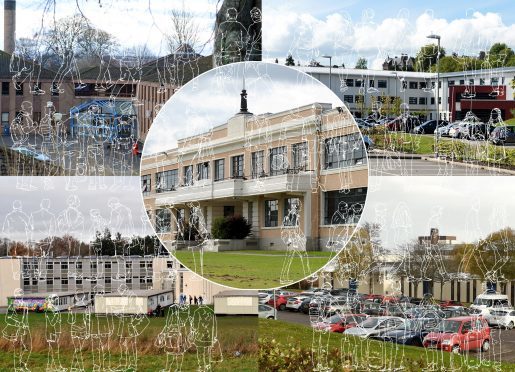All secondary schools in Inverness will have pupil numbers capped amid mounting pressure on classrooms.
The S1, S2 and S4 year groups at Charleston Academy, Culloden Academy, Inverness High, Inverness Royal Academy and Millburn Academy will have a maximum roll imposed for the 2016-17 session.
Education chiefs say pressures have been increased by housebuilding in the south of the city in the past decade, which has led to a rapid influx of families.
City primary schools with their entire roll capped include Cradlehall, Hilton, Inshes, Lochardil and Milton of Leys.
Three other secondary schools in the north – Dingwall Academy, Glen Urquhart High and Lochaber High – will also have their pupil numbers limited in the S1, S2 and S4 year groups.
Jim Steven, Highland Council’s head of education, said: “The capping is part one of a two-part process.
“Inverness is growing so quickly but we are looking at a five-year plan for accommodation.
“It’s not been pretty with the tightening budget position and there has been fairly significant growth, and the expectation is to make sure we get the accommodation in place.
“Part two is more important and that’s about going to talk to parents and families about where we invest the limited resources.”
In recent years, the council has been forced into extending a number of new primaries following dramatic increases in pupil numbers.
Milton of Leys Primary opened in 2011 to ease overcrowding at Inshes Primary.
However, a £650,000, three-classroom extension has already been built to deal with the ever-expanding roll.
Inverness South councillor Ken Gowans fought for four classrooms to be provided but was told they were not needed.
Councillor Gowans, who has raised concerns about school capacities in the past, blames poor planning.
He said: “Developers have been allowed to build houses without a similar development in infrastructure.
“That is compounded by the lack of consultation between the education department, planning department and developers to ensure there is a sustainable way forward.
“Parents are putting up with kids in cramped conditions and kids having to change in classrooms.
“And at Milton of Leys, for instance, the school library has moved into the corridor so the room can be made into a classroom.
“They need to make an informed assessment on the amount of houses that they are building and the type of demographic so they can come to a realistic assessment of the pressures that may appear in primary schools.”
Councillor Drew Millar, the local authority’s education committee chairman, said: “There is a report going to the Inverness city committee about the Inverness area and local members will have a view on Inverness schools.
“The thing is that Inverness is growing quicker than they can cope with and capping will ensure those entitled to go to these schools will be able to. They have to look at how they expand the accommodation.
“The council has allocated quite a considerable amount of money for spending in Inverness and the decision will be made by Inverness members there on how this will be spent.
“Such decisions are local issues and I hope they will be able to come to an amicable solution to make sure schools do have enough with an ever-increasing population.”
The capping takes account of applications that have been received so far, and the known demands within the catchment areas of each of the schools.
